Related Research Articles
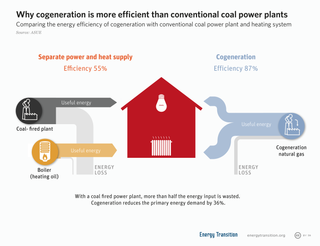
Cogeneration or combined heat and power (CHP) is the use of a heat engine or power station to generate electricity and useful heat at the same time.

The Public Utility Regulatory Policies Act is a United States Act passed as part of the National Energy Act. It was meant to promote energy conservation and promote greater use of domestic energy and renewable energy. The law was created in response to the 1973 energy crisis, and one year in advance of a second energy crisis.
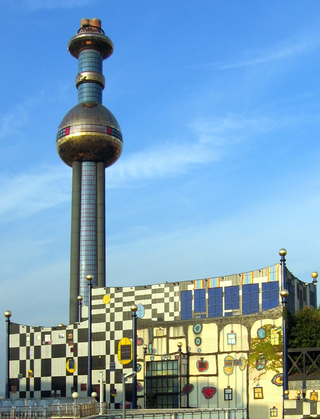
District heating is a system for distributing heat generated in a centralized location through a system of insulated pipes for residential and commercial heating requirements such as space heating and water heating. The heat is often obtained from a cogeneration plant burning fossil fuels or biomass, but heat-only boiler stations, geothermal heating, heat pumps and central solar heating are also used, as well as heat waste from factories and nuclear power electricity generation. District heating plants can provide higher efficiencies and better pollution control than localized boilers. According to some research, district heating with combined heat and power (CHPDH) is the cheapest method of cutting carbon emissions, and has one of the lowest carbon footprints of all fossil generation plants.
Micro combined heat and power, micro-CHP, µCHP or mCHP is an extension of the idea of cogeneration to the single/multi family home or small office building in the range of up to 50 kW. Usual technologies for the production of heat and power in one common process are e.g. internal combustion engines, micro gas turbines, stirling engines or fuel cells.
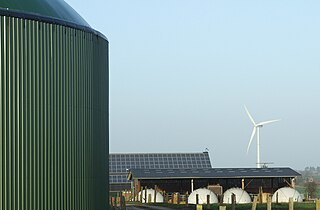
Renewable energy in Germany is mainly based on wind and biomass, plus solar and hydro. Germany had the world's largest photovoltaic installed capacity until 2014, and as of 2021 it has over 58 GW. It is also the world's third country by installed total wind power capacity, 64 GW in 2021 and second for offshore wind, with over 7 GW. Germany has been called "the world's first major renewable energy economy".

Renewable energy commercialization involves the deployment of three generations of renewable energy technologies dating back more than 100 years. First-generation technologies, which are already mature and economically competitive, include biomass, hydroelectricity, geothermal power and heat. Second-generation technologies are market-ready and are being deployed at the present time; they include solar heating, photovoltaics, wind power, solar thermal power stations, and modern forms of bioenergy. Third-generation technologies require continued R&D efforts in order to make large contributions on a global scale and include advanced biomass gasification, hot-dry-rock geothermal power, and ocean energy. In 2019, nearly 75% of new installed electricity generation capacity used renewable energy and the International Energy Agency (IEA) has predicted that by 2025, renewable capacity will meet 35% of global power generation.
The Directive on the promotion of cogeneration based on a useful heat demand in the internal energy market and amending Directive 92/42/EEC, officially Directive 2004/8/EC, is a European Union directive for promoting the use of cogeneration, popularly better known as the 'Combined Heat and Power (CHP) Directive'.
A feed-in tariff is a policy mechanism designed to accelerate investment in renewable energy technologies by offering long-term contracts to renewable energy producers. This means promising renewable energy producers an above-market price and providing price certainty and long-term contracts that help finance renewable energy investments. Typically, FITs award different prices to different sources of renewable energy in order to encourage the development of one technology over another. For example, technologies such as wind power and solar PV are awarded a higher price per kWh than tidal power. FITs often include a "digression": a gradual decrease of the price or tariff in order to follow and encourage technological cost reductions.

Renewable energy in Finland grew to 38.7% of total final energy consumption by year end 2014, achieving joint second position with Latvia in terms of renewable energy consumption by share amongst the EU-28 countries, behind its neighbour Sweden in first position on a 52.6% share. The 2014 share in Finland breaks down as renewable energy providing 52% of the heating and cooling sector, 31.4% of the electricity sector and 21.6% of the transport sector. By 2014, Finland had already exceeded its 2020 target for renewable energy use under the EU renewable energy directive as shown in the table of country targets.
The electricity sector in Argentina constitutes the third largest power market in Latin America. It relies mostly on thermal generation and hydropower generation (36%). The prevailing natural gas-fired thermal generation is at risk due to the uncertainty about future gas supply.

Spain, along with other European Union States, has a target of generating 32% of all its energy needs from renewable energy sources by 2030. A previous target of 20% for 2020, with an additional 0.8% available for other EU countries under the cooperation mechanism, was reached and slightly surpassed. In 2021, renewables generated 46.7% of Spain's electricity needs, the largest part of it from wind power (23.3%), followed by hydroelectric (11.4%), solar (9.9%), and other renewables (2.2%).
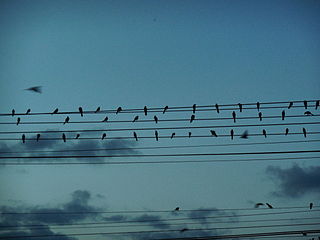
Nicaragua is the country in Central America with the lowest electricity generation, as well as the lowest percentage of population with access to electricity. The unbundling and privatization process of the 1990s did not achieve the expected objectives, resulting in very little generation capacity added to the system. This, together with its high dependence on oil for electricity generation, led to an energy crisis in 2006 from which the country has not fully recovered yet.
Energy recycling is the energy recovery process of using energy that would normally be wasted, usually by converting it into electricity or thermal energy. Undertaken at manufacturing facilities, power plants, and large institutions such as hospitals and universities, it significantly increases efficiency, thereby reducing energy costs and greenhouse gas pollution simultaneously. The process is noted for its potential to mitigate global warming profitably. This work is usually done in the form of combined heat and power or waste heat recovery.

The Renewable Energy Sources Act or EEG is a series of German laws that originally provided a feed-in tariff (FIT) scheme to encourage the generation of renewable electricity. The EEG 2014 specified the transition to an auction system for most technologies which has been finished with the current version EEG 2017.

The energy policy of Malaysia is determined by the Malaysian Government, which address issues of energy production, distribution, and consumption. The Department of Electricity and Gas Supply acts as the regulator while other players in the energy sector include energy supply and service companies, research and development institutions and consumers. Government-linked companies Petronas and Tenaga Nasional Berhad are major players in Malaysia's energy sector.
The Business Energy Investment Tax Credit (ITC) is a U.S. federal corporate tax credit that is applicable to commercial, industrial, utility, and agricultural sectors. Eligible technologies for the ITC are solar water heat, solar space heat, solar thermal electric, solar thermal process heat, photovoltaics, wind, biomass, geothermal electric, fuel cells, geothermal heat pumps, CHP/cogeneration, solar hybrid lighting, microturbines, and geothermal direct-use. This program is co-administered by the Internal Revenue Service (IRS) and the U.S. Department of Energy (DOE). The tax credits were expanded by the American Recovery and Reinvestment Act of 2009 and most components will last until December 31, 2016.
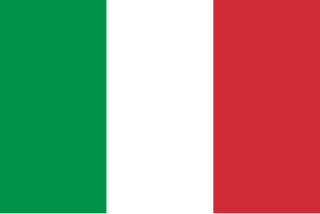
Renewable energy has developed rapidly in Italy over the past decade and provided the country a means of diversifying from its historical dependency on imported fuels. Solar power accounted for around 8% of the total electric production in the country in 2014, making Italy the country with the highest contribution from solar energy in the world that year. Rapid growth in the deployment of solar, wind and bio energy in recent years lead to Italy producing over 40% of its electricity from renewable sources in 2014.
Public plans for energy efficient refurbishment are put in place by states to encourage building owners to renovate their properties in a way that increases their energy performance. As financing represents the most important obstacle to this type of renovation, the plans favour financial incentives in the form of loans or grants. Various institutions can be involved in the process, such as ministries, banks, firms, or energy services companies (ESCOs).
Denmark is a leading country in renewable energy production and usage. Renewable energy sources collectively produced 75% of Denmark's electricity generation in 2022, and are expected to provide 100% of national electric power production from 2030. Including energy use in the heating/cooling and transport sectors, Denmark is expected to reach 100% renewable energy in 2050, up from the 34% recorded in 2021.
Biofuels play a major part in the renewable energy strategy of Denmark. Denmark is using biofuel to achieve its target of using 100% renewable energy for all energy uses by 2050. Biofuels provide a large share of energy sources in Denmark when considering all sectors of energy demand. In conjunction with Denmark's highly developed renewable energy resources in other areas, biofuels are helping Denmark meet its ambitious renewable energy targets.